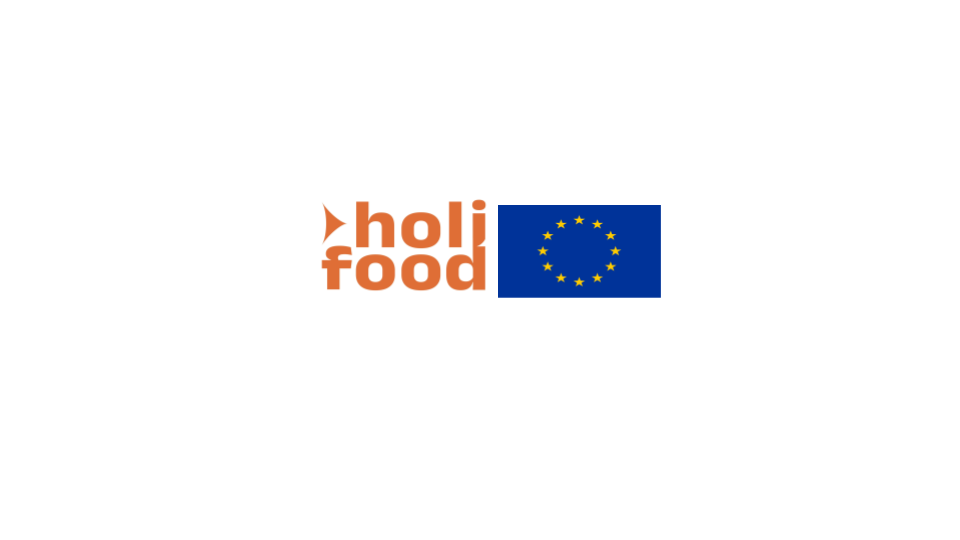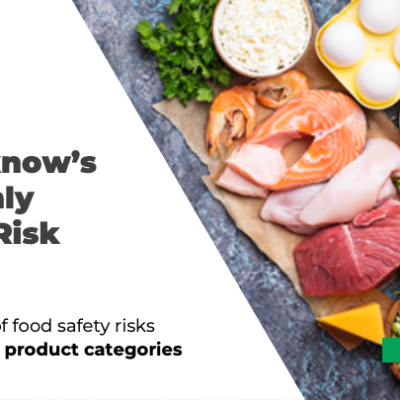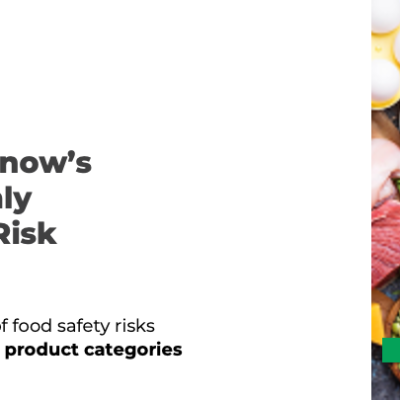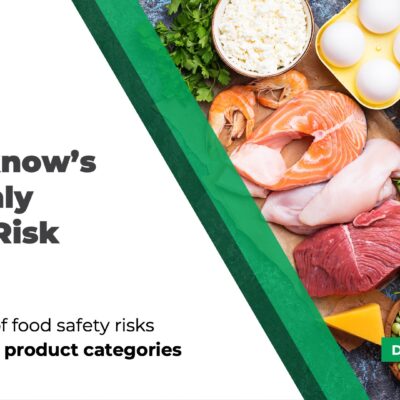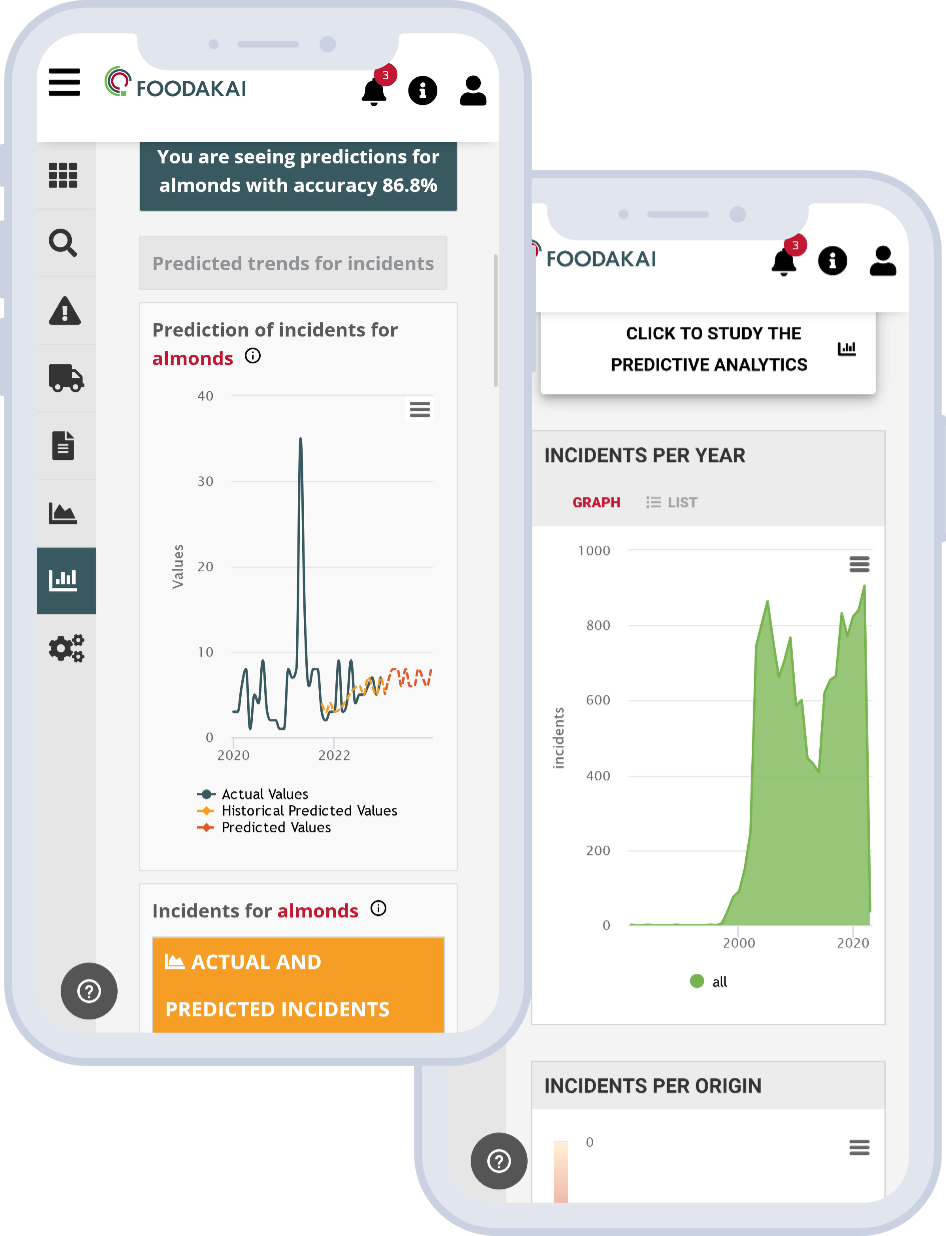
Fruits & Vegetable Products: a brief incidents historical overview and a peek at the future
There is no argument that fruits and vegetables represent a substantial food product category in consumers’ daily food consumption habits. They play a fundamental role in our nutrition and are, arguably, the most easily accessible food products worldwide.
Yet fruits and vegetables still represent one of the most vulnerable product categories when it comes to food safety. Fruits & Vegetables have consistently over the years been one of the food product categories with the largest number of recalls. Just last year, according To EU’s RASFF, the fresh product category placed at the very top of the list of the products recalled, making up 24% of the total recalls in combination with poultry meat products.
With the growing calls for a larger adoption of a healthier lifestyle worldwide, that focuses on raw and unprocessed products such as the fruits & vegetables, the spotlight falls on food & beverage companies to ensure the food safety of their fresh produce.
In addition, unprecedented disruptions in the supply chain due to geopolitical unrest in sourcing countries that can cause delays in transportation that can endanger longevity of fresh products as well the increasing effects of climate change further put the pressure of food companies to enhance food risk assessment processes.
For food companies to be able to increase the effectiveness of their food safety measures and safeguard their products, they need to be able to have a comprehensive overview of all risks to their supply chain as well as understand all new/emerging risks for their key products.
For that reason, we decided to take a look at some historical incident trends forthe product category overall over the past 5 years and look ahead to the future. To do that, we utilized FOODAKAI, the AI and predictive analytics platform that analyzed past data to forecast future risk.
Historical Trends
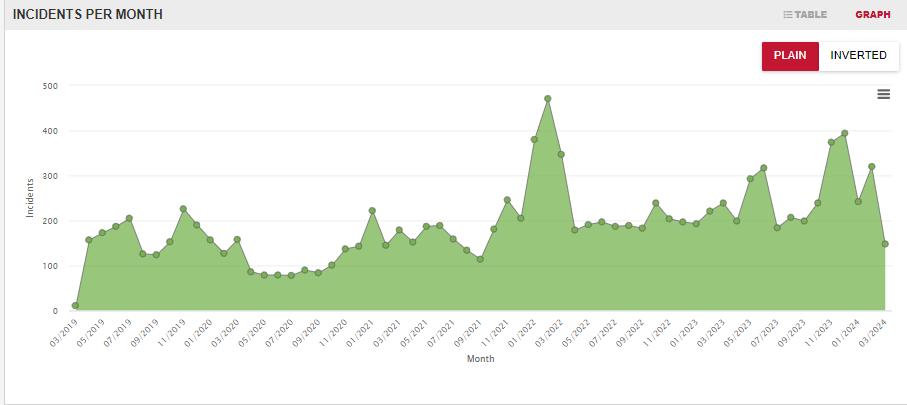
Over the last five years a staggering 11.717 food safety incidents have been recorded for the food product category, with notable peaks in March 2022 and January 2024.

Listeria monocytogenes and Pesticides take the top 2 spots as the hazards associated with most incidents, with 1.174 and 879 incidents respectively.
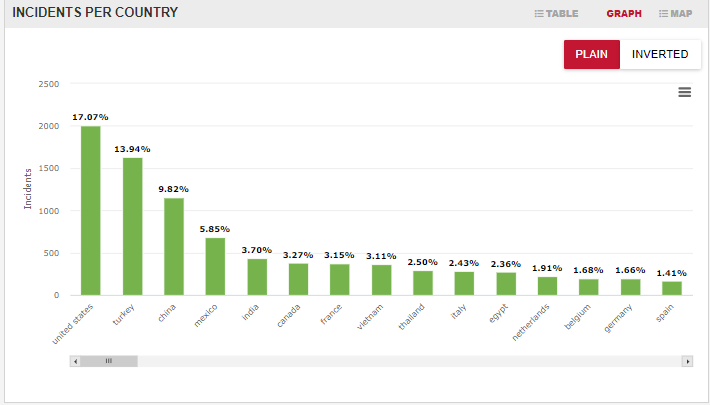
US was the country with the highest number of incidents reported, amounting to 17.07% of the incidents followed by Turkey with 13.94%.
As for the product with the most incidents, according to FOODAKAI, that was fresh peppers, which amounted to 6.9% of the total incidents reported over the last 5 years, with 407 incidents, 116 of which were due to acetamiprid (pesticides).
What does the future look like for the product category and for fresh peppers?
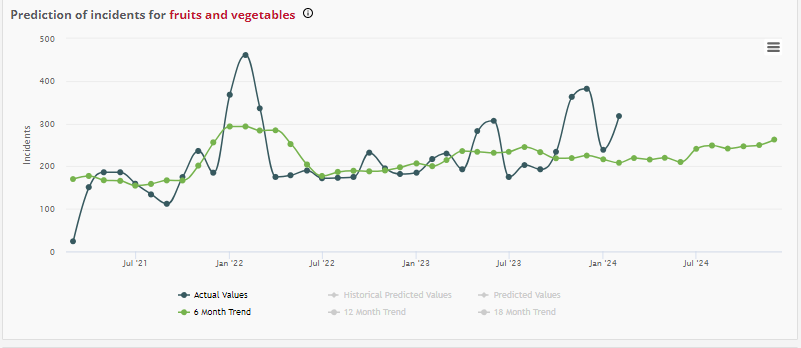
The 6-month incident forecast trend for the fruits and vegetables food product category highlights a steady number of incidents as FOODAKAI forecasts a 4% decrease in the number of incidents.
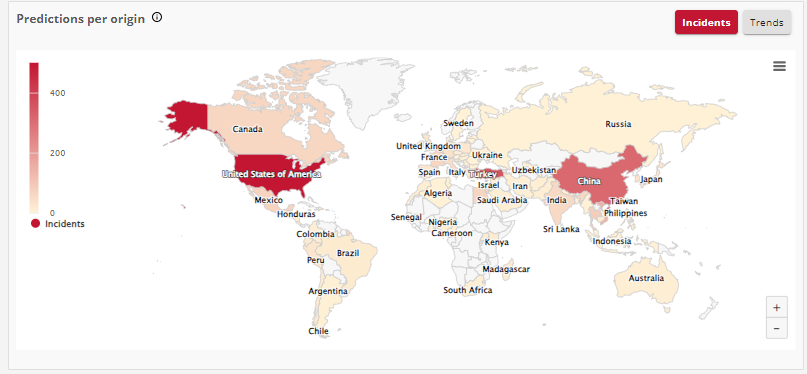
The US, Turkey and China are the countries forecasted to be the countries with most forecasted incidents over the next months.
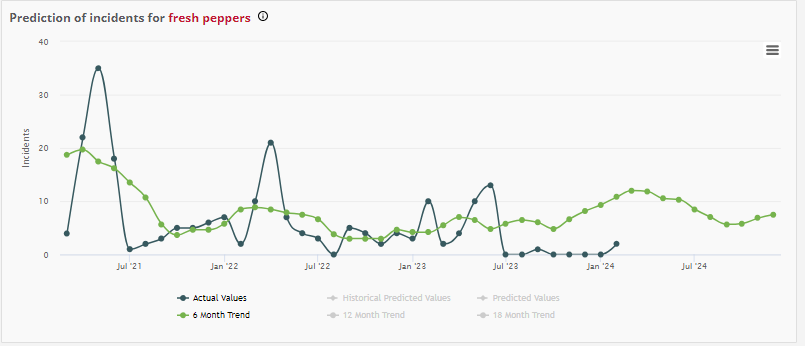
In contrast to the fruits & vegetables product category as a whole, fresh peppers incidents are expected to increase over the next months as indicated over the 6-month incident forecast trends. A 225% increase in the number of incidents is expected, with Turkey being the primary country with high risk for such incidents, and pesticides as the prevalent hazard.
Enhanced Food Safety Risk Assessment through Accurate Forecasting
With a comprehensive overview of the history of food safety for key ingredients and products as well as the prevalent hazards associated with them, food & beverage companies can identify the most common risks & hazards in their supply chain.
By accessing highly accurateforecasts on what the most pressing risks and hazards for their key ingredients for the coming months they can strengthen risk assessment processes and formulate a comprehensive risk mitigation plan.
Through the implementation of FOODAKAI’S highly accurate forecasts food companies can effectively move from a reactive to a proactive stance.
Want to receive helpful food safety intelligence in your inbox?
This report was prepared under the HOLiFOOD project.
HOLiFOOD is a project that has received funding from the European Union’s Horizon Europe research and innovation programme HOLiFOOD (Grant Agreement Number 101059813). Views and opinions expressed are, however, those of the author(s) only and do not necessarily reflect those of the European Union or European Research Executive Agency. Neither the European Union nor the granting authority can be held responsible for them. Project website: https://holifoodproject.eu
